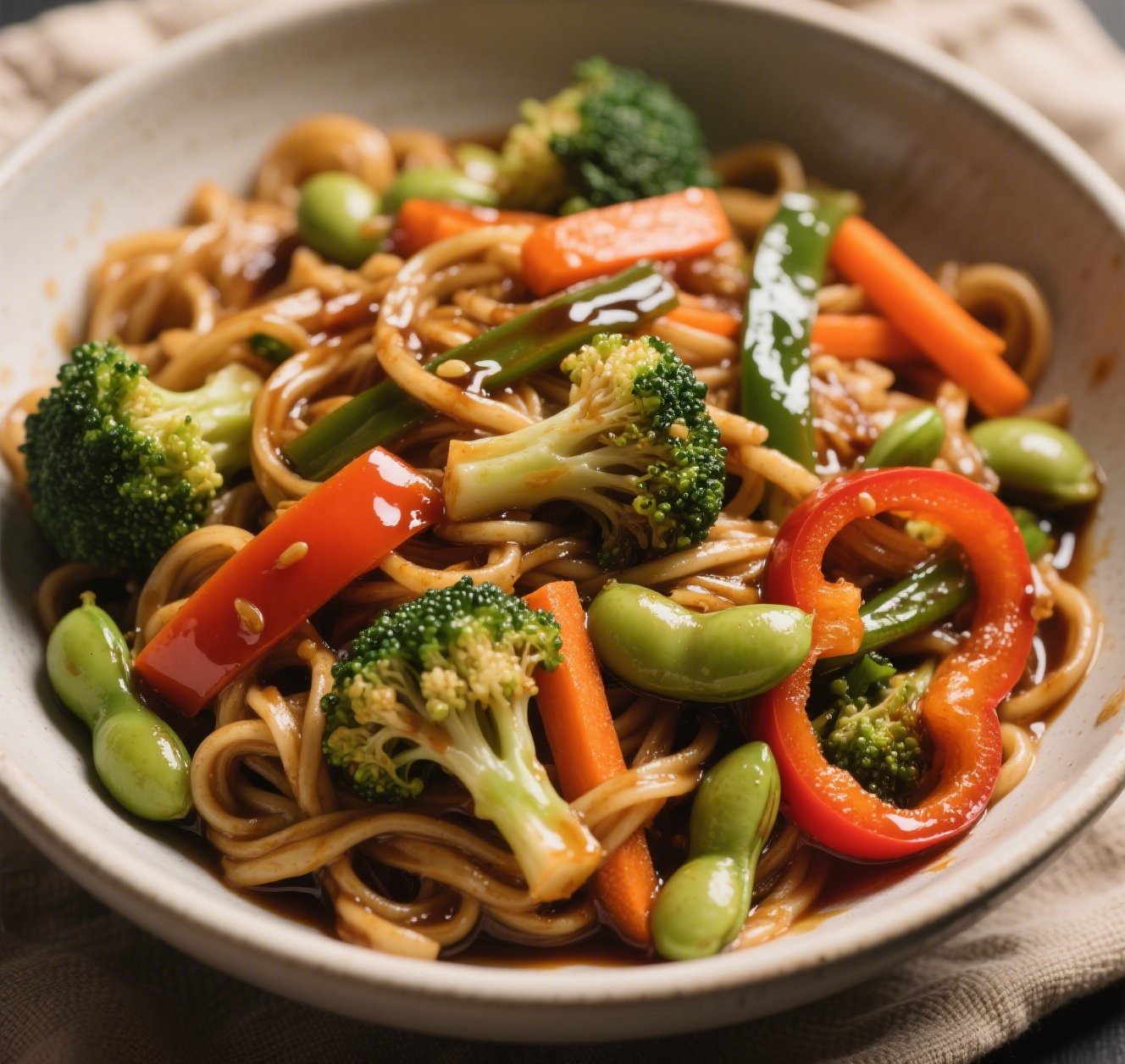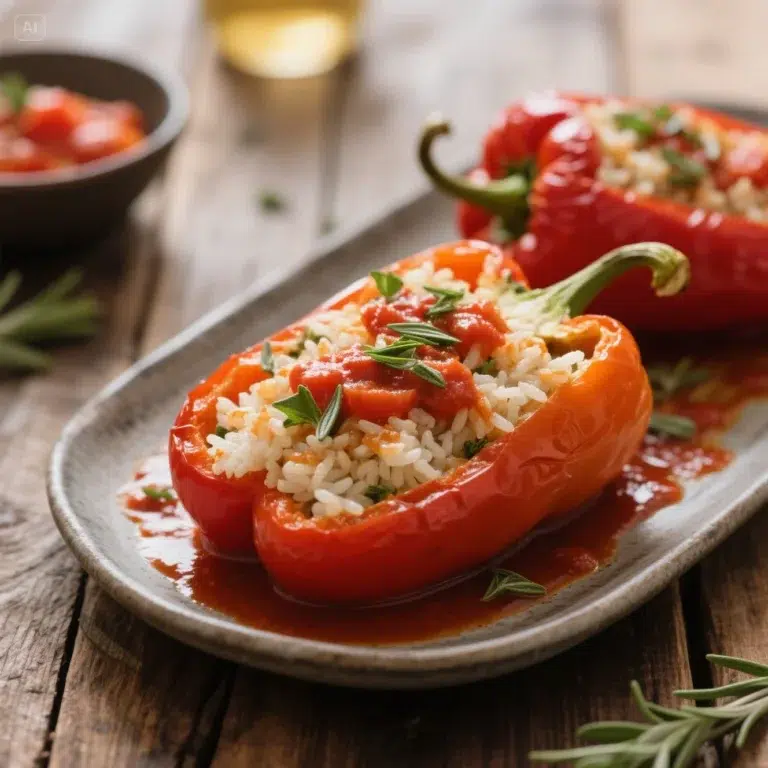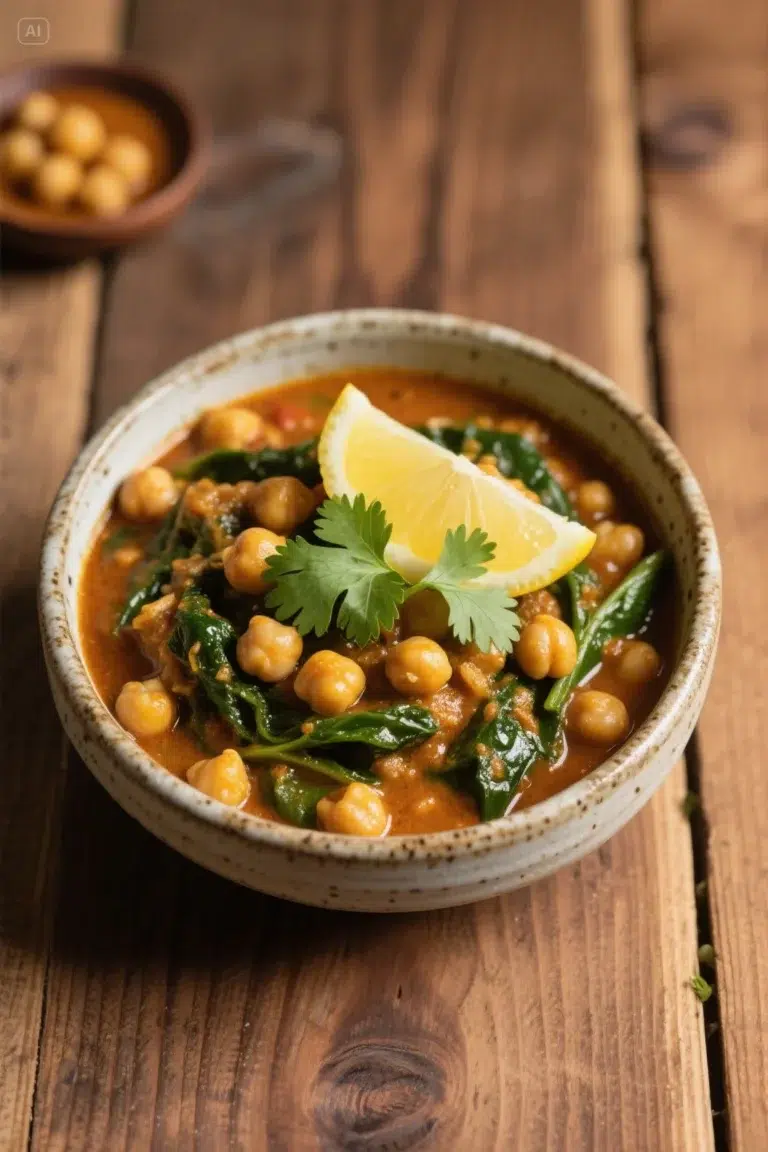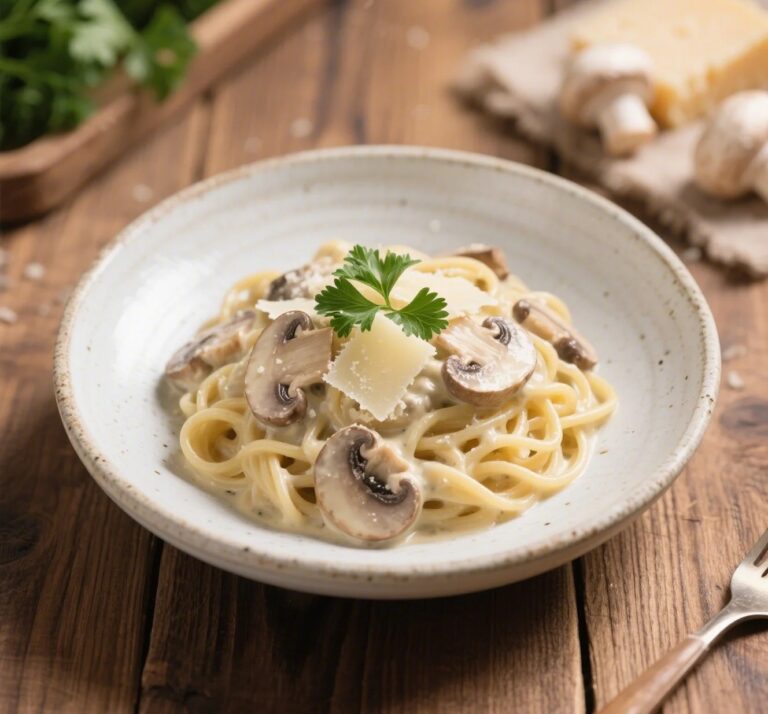The best Vegetarian Stir-Fry Noodles: 5 Flavor-Packed Reasons You’ll Love This Quick and Healthy Dish
Looking for a quick, healthy, and flavor-packed dinner. vegetarian stir-fry noodles that satisfies your noodle cravings and keeps things plant-based? Look no further than vegetarian stir-fry noodles—a go-to meal for busy weeknights that doesn’t sacrifice taste or nutrition. This dish brings together brown rice noodles, crisp-tender vegetables, and a savory sauce with hints of sesame, ginger, and a little kick of sriracha.
In this article, we’ll break down everything you need to know to make your own vegetarian stir-fry noodles at home, from the best veggies to use to stir-fry tips, sauce secrets, and more. We’ve also got answers to your most common questions about stir-frying.
Discover great ideas like this one in our vegan buddha bowl recipe.
Why Vegetarian Stir-Fry Noodles Are the Ultimate Comfort Food
– Nutritional benefits of vegetarian stir-fry meals
Vegetarian stir-fry noodles aren’t just delicious—they’re packed with wholesome ingredients that deliver a balanced meal in one bowl. With brown rice noodles, you get complex carbs that provide sustained energy. The vibrant mix of broccoli, carrots, bell pepper, and edamame adds fiber, essential vitamins (like C, A, and K), and plant-based protein.
Here’s a quick nutritional overview for one bowl:
| Nutrient | Amount |
|---|---|
| Calories | 507 kcal |
| Carbohydrates | 61 g |
| Protein | 20 g |
| Fat | 22 g |
| Fiber | 10 g |
This balance makes vegetarian stir-fry noodles a powerhouse of nutrition—perfect for fueling your day without weighing you down.
– How Vegetarian Stir-Fry Noodles support a plant-based lifestyle
Following a plant-based diet doesn’t mean giving up bold, exciting flavors. This dish is 100% vegan-friendly and totally customizable. The beauty of stir-fry is in its flexibility—you can easily rotate vegetables with what’s in season or what’s already in your fridge.
The tamari and tahini-based sauce delivers depth and umami, while the toasted sesame oil gives it that signature stir-fry aroma. All without any animal products.
Looking for inspiration? Try this stuffed bell peppers with quinoa and veggies recipe to expand your plant-based options.
Essential Ingredients for the Perfect Vegetarian Stir-Fry Noodles
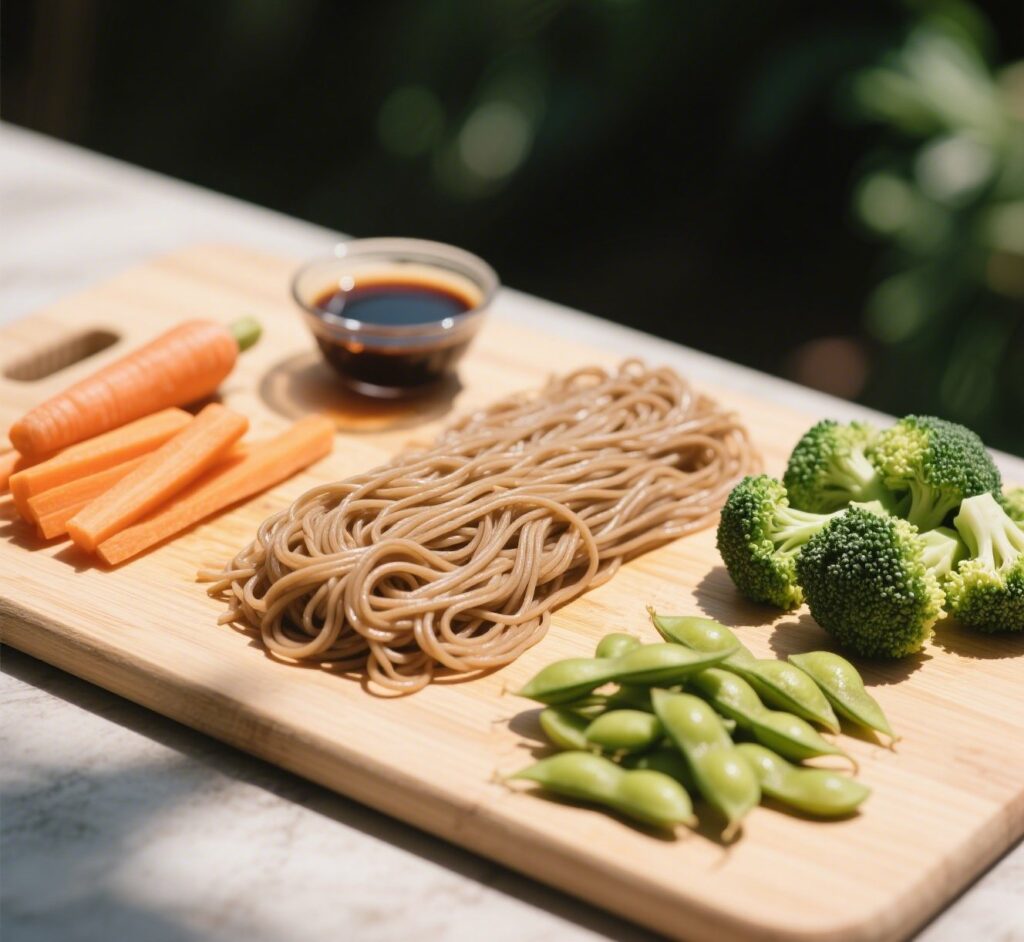
– Core components: rice noodles, colorful veggies, and protein
A great stir-fry starts with the right base—and for this recipe, that’s brown rice noodles. They’re naturally gluten-free, quick to cook, and soak up sauces beautifully. Plus, they have a satisfying chew that holds up well against stir-fried veggies.
Here’s what goes into the heart of this recipe:
- Brown rice noodles (12 ounces) – the base of the dish, rich in fiber and naturally gluten-free
- Vegetables – including broccoli, carrots, bell peppers, and edamame, all chosen for their texture and flavor
- Aromatics – garlic, ginger, and green onions add depth and freshness
- Plant-based protein – edamame packs 17g of protein per cup, making this meal extra satisfying without meat
These ingredients form the base of a nutritious, colorful bowl that looks as good as it tastes.
– Importance of sauce balance: savory, spicy, nutty
The sauce is what makes or breaks a stir-fry, and in this vegetarian version, we’re using a bold blend of tamari, toasted sesame oil, tahini, and sriracha.
Here’s what makes the sauce so crave-worthy:
| Sauce Component | Flavor Role |
|---|---|
| Tamari (or soy sauce) | Salty umami base |
| Toasted sesame oil | Deep, nutty aroma |
| Tahini | Creamy, nutty depth |
| Sriracha | A spicy kick that ties everything together |
| Vegetable broth | Helps distribute flavor and keep it moist |
Want to add some zing? A splash of lime juice or rice vinegar can enhance brightness. For sweetness, try a teaspoon of maple syrup or coconut sugar.
Check out how we balance flavors in our rainbow veggie pasta salad—another great option for plant-based eaters.
Step-by-Step Instructions to Make Vegetarian Stir-Fry Noodles
– Preparing noodles to prevent stickiness
Noodles are the backbone of your stir-fry, so cooking them right matters. For brown rice noodles, follow these essential steps:
- Bring a large pot of salted water to a boil. The salt seasons the noodles and helps retain structure.
- Cook according to package instructions, usually 6–8 minutes. Stir a few times to prevent clumping.
- Rinse the cooked noodles under cold water to stop the cooking process and remove excess starch—this is key to keeping them from sticking later.
- Toss lightly with a touch of sesame oil if you won’t be using them immediately.
After mixing the sauce and noodles, simmer the vegetarian stir-fry noodles to absorb every drop of flavor.
– Stir-frying vegetables for perfect texture
The trick to stir-frying is heat and speed. Here’s how to get vegetables that are tender but still crisp:
- Heat a large pan or wok over medium-high heat and add the oil. Let it shimmer.
- Toss in green onion, garlic, and ginger first. Sauté for 1–2 minutes until just golden—this releases all their flavor.
- Add broccoli, edamame, carrots, and bell pepper, followed by a splash of vegetable broth. Stir well.
- Cover the pan halfway and cook for 5–7 minutes, until the broccoli is fork-tender and the carrots still have a slight bite.
You want your veggies to keep some crunch—they’ll continue to cook a bit once mixed with the noodles.
– Mixing everything for bold flavor infusion
Once your veggies are cooked and your noodles are prepped, it’s time to bring everything together:
- Add the cooked noodles to the pan with the veggies.
- Pour in the remaining ingredients: tamari, sesame oil, tahini, and sriracha. Toss everything until evenly coated.
- Simmer for 5 minutes, letting the vegetarian stir-fry noodles soak up all that flavor-packed sauce. Stir gently to avoid breaking the noodles.
Finish by garnishing with chopped cilantro, red pepper flakes, and sesame seeds. And just like that, dinner is ready.
Don’t miss our spicy, savory chickpea and spinach curry if you’re into bold plant-based flavors.
Best Vegetables for Stir-Fry Noodles
– Top veggies to use: broccoli, carrots, bell peppers, etc.
When it comes to stir-fry, not all vegetables are created equal. Some hold up better to high heat and quick cooking. Here’s a breakdown of the best veggies for vegetarian stir-fry noodles and why they work so well:
| Vegetable | Why It’s Great |
|---|---|
| Broccoli | Adds crunch, fiber, and soaks up the sauce beautifully |
| Carrots | Slight sweetness and firm texture even after cooking |
| Bell peppers | Bright color and juicy texture that balances the dish |
| Edamame | A great plant-based protein boost (17g per cup) |
| Green onion | Mild sharpness that enhances aromatics |
| Garlic & ginger | Foundation flavors in Asian-inspired stir-fry |
These veggies bring color, crunch, and a variety of nutrients. They cook quickly and pair perfectly with bold sauces.
If you’re meal-prepping or using frozen veggies, make sure to thaw and pat them dry first to avoid steaming in the pan.
– Seasonal and regional vegetable alternatives
The beauty of stir-fry noodles is how easy it is to customize them with what’s in your fridge or in season.
Here are some excellent alternatives to keep things exciting:
| Season | Swap-In Ideas |
|---|---|
| Spring | Snap peas, asparagus, baby spinach |
| Summer | Zucchini, yellow squash, sweet corn |
| Fall | Shredded cabbage, sweet potatoes (pre-roasted), mushrooms |
| Winter | Kale, Brussels sprouts (shaved), frozen peas |
You can also add more bulk with leafy greens like bok choy or napa cabbage. Just stir them in at the end since they wilt fast.
Looking for more vibrant, veggie-packed dishes? Discover our refreshing banana and peanut butter smoothie—a great side or breakfast option.
Sauce Secrets: Making the Ultimate Stir-Fry Noodle Sauce
– How to balance soy, sesame, tahini, and sriracha
The soul of any vegetarian stir-fry noodles is in the sauce. And for vegetarian stir-fry noodles, getting the balance right is what transforms a decent dish into something crave-worthy.
This recipe combines four main sauce elements:
| Ingredient | Flavor Role |
|---|---|
| Tamari or soy sauce (⅓ cup) | Salty umami base with rich depth |
| Toasted sesame oil (2 tbsp) | Nutty aroma that screams “stir-fry” |
| Tahini (2 tbsp) | Creamy texture, slightly bitter, adds body |
| Sriracha (1 tbsp) | Heat and tang with just the right kick |
What makes this sauce special is the creaminess from tahini, which blends beautifully with the tamari and sesame oil to coat every strand of noodle evenly.
To get that glossy, velvety texture:
- Whisk the tamari, tahini, sesame oil, and vegetarian stir-fry noodles sriracha together before adding to the pan.
- Add the mixture after the veggies are almost done and noodles are in the pan.
- Simmer everything for 4–5 minutes so the sauce thickens slightly and clings to the noodles.
Optional: add a tablespoon of vegetable broth to loosen the sauce if needed. You can even stir in a splash of lime juice or rice vinegar to brighten it up.
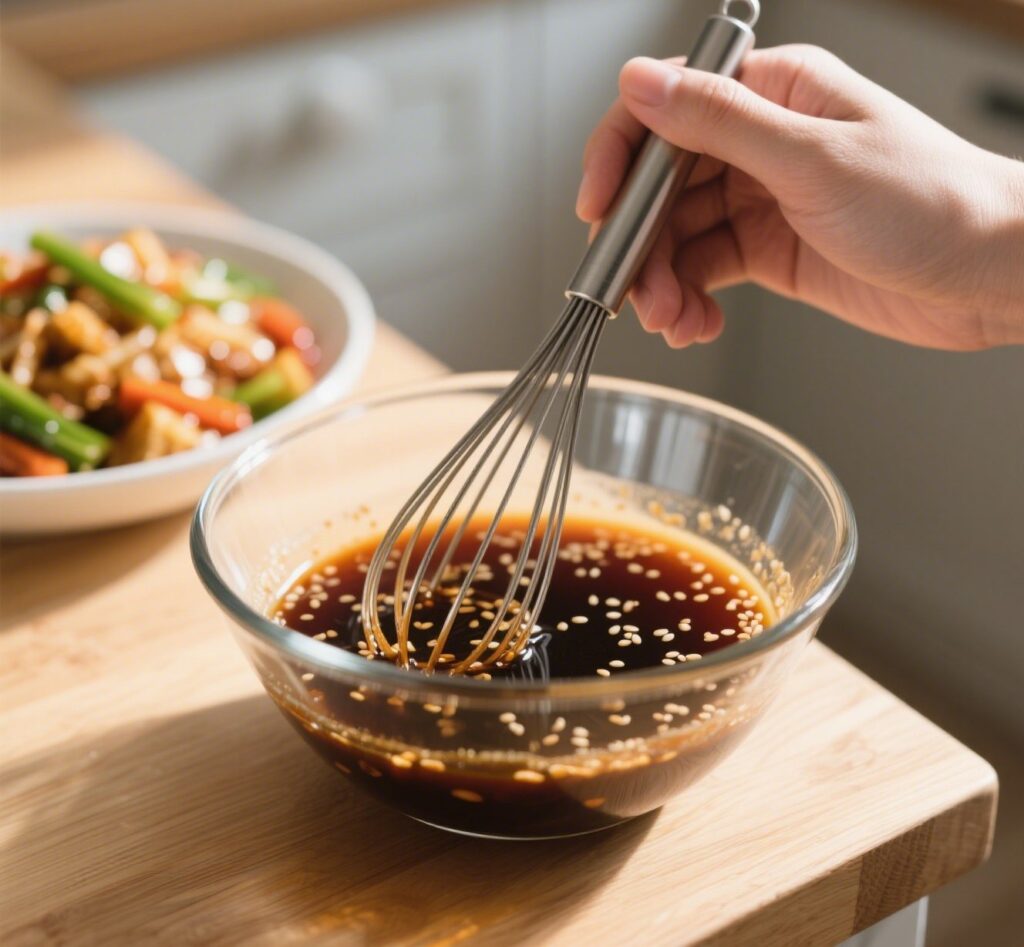
– Optional tweaks for sweetness, tang, or extra heat
Want to give your sauce a personal twist? Try one of these pro tips:
| Flavor Boost | Ingredient |
|---|---|
| Sweeter profile | 1 tsp maple syrup or agave |
| Zesty tang | 1 tbsp rice vinegar or fresh lime juice |
| Bolder spice | Add red pepper flakes or a second spoon of sriracha |
| Creamier texture | Mix in 1 tbsp peanut butter instead of tahini |
These tweaks let you match your sauce to your taste buds—whether you want spicy, sweet, or somewhere in between.
Don’t miss our green juice for a refreshing drink to balance out the spicy heat of your noodles.
Common Mistakes to Avoid When Cooking Stir-Fry Noodles
– Overcrowding the pan and uneven cooking
A common rookie mistake when making stir-fry noodles is trying to cook everything at once in a small pan. When the pan is too crowded, vegetables steam instead of sear, leading to soggy textures and muted flavors.
Here’s how to avoid it:
- Use a large wok or wide nonstick skillet to give ingredients room to move.
- Cook high-water veggies (like bell peppers or zucchini) separately if needed.
- Stir-fry in batches if doubling the recipe for meal prep.
The key is high heat + motion = crisp-tender veggies and bold flavor.
– Overcooking noodles or underseasoning veggies
Another easy misstep? Overcookedvegetarian stir-fry noodles that fall apart and vegetables that taste bland.
Avoid these mistakes by following these tips:
| Mistake | Fix |
|---|---|
| Overcooked noodles | Cook just until al dente and rinse with cold water |
| Dry or sticky noodles | Toss with a little sesame oil before stir-frying |
| Underseasoned veggies | Use garlic, ginger, and green onion as your flavor base |
| Flat sauce | Balance saltiness (tamari), spice (sriracha), and fat (tahini) |
Also, don’t skip tasting as you go—flavor should build in layers, not just from the sauce at the end.
Check out our method for building layers of flavor in creamy mushroom pasta—a technique you can apply here too!
Variations and Add-Ons for Customizing Your Stir-Fry
– Vegan protein options: tofu, tempeh, edamame
While edamame already provides a good protein punch in this recipe (about 17g per cup), you can easily boost the meal further with other vegan-friendly proteins:
| Plant-Based Protein | Prep Tip |
|---|---|
| Tofu (firm or extra-firm) | Press, cube, and pan-fry until golden before adding |
| Tempeh | Slice thin and sauté with tamari and garlic |
| Chickpeas | Roast or pan-toast for texture |
| Seitan strips | Great for a meaty texture, stir-fry quickly on high heat |
These protein add-ons make your noodles even heartier and help keep you full longer—perfect for dinner or meal prep.
– Sauce swaps and noodle variations (soba, udon, etc.)
Want to shake up the recipe? There are plenty of ways to switch the base ingredients without losing flavor.
Alternative Noodles:
| Noodle Type | Characteristics |
|---|---|
| Soba noodles | Made from buckwheat; earthy flavor and gluten-free |
| Udon noodles | Thick, chewy, and great for soaking up sauce |
| Zucchini noodles | Low-carb and fresh—best added at the end |
| Glass noodles | Light and springy; made from mung bean starch |
Sauce Swaps:
| Alternate Sauce | Flavor Profile |
|---|---|
| Peanut sauce | Creamy and nutty with a hint of sweetness |
| Hoisin-based sauce | Rich and slightly sweet; pairs well with tofu |
| Coconut aminos | Soy-free tamari substitute with a lighter taste |
Try mixing up the sauce and noodle combo every few weeks to keep things interesting. You’ll never get bored with stir-fry!
Don’t miss our vegan buddha bowl for another customizable, protein-rich meal idea.
Serving Suggestions and Pairings
– Garnishes that elevate: cilantro, red pepper flakes, sesame seeds
Finishing touches can make a big difference when it comes to flavor and presentation. Once your vegetarian stir-fry noodles are hot and ready, don’t skip the garnishes. These small additions layer on flavor, texture, and color:
| Garnish | Why It Works |
|---|---|
| Chopped cilantro | Adds freshness and a pop of green |
| Red pepper flakes | Kicks up the spice factor |
| Sesame seeds (toasted) | Adds a light crunch and nutty aroma |
| Green onions (fresh) | Mild onion flavor and color contrast |
Feel free to get creative—crushed peanuts or a squeeze of lime can also elevate the dish in unexpected ways.
– What to serve with stir-fry noodles: drinks and sides
Vegetarian stir-fry noodles are satisfying enough on their own, but pairing them with a refreshing drink or light side dish rounds out the meal nicely.
Here are a few pairing ideas:
Light Sides:
- Cucumber salad with rice vinegar and sesame oil
- Steamed dumplings or veggie spring rolls
- Miso soup or clear broth with mushrooms and scallions
Drinks:
- Sparkling water with lime and mint
- Iced green tea or jasmine tea
- Fresh juice like tropical mango pineapple
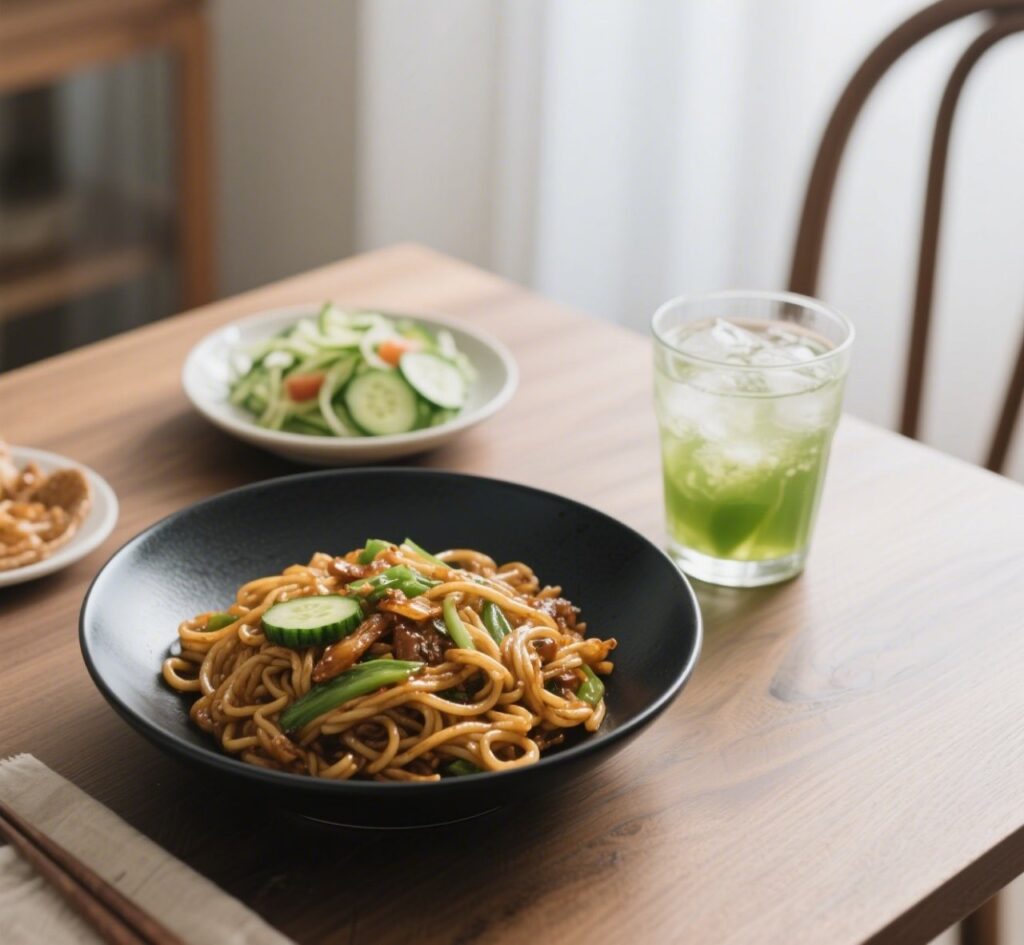
If you’re serving guests or looking to impress, plate the noodles in wide bowls with the garnishes arranged neatly on top. It looks restaurant-worthy—and it tastes even better.
Looking for a fun side? Try our fluffy pancakes with blueberries for a sweet contrast if you’re doing brunch-for-dinner.
FAQs About Vegetarian Stir-Fry Noodles
Can I use regular pasta instead of brown rice noodles?
Yes, you can substitute with wheat noodles, soba, or even spaghetti if needed. The texture will be slightly different, but it still works well.
How do I keep the noodles from sticking together?
After draining, rinse them under cold water and toss with a teaspoon of oil. This helps prevent clumping until you’re ready to stir-fry.
Is there a substitute for tahini?
Yes — you can use almond butter, peanut butter, or simply leave it out for a lighter sauce. It changes the flavor slightly but still tastes delicious.
Can I make this dish ahead of time?
Definitely. Store in an airtight container in the fridge for up to 3 days. Reheat gently in a pan with a splash of broth or water to loosen it up.
How can I make it spicier?
Add extra sriracha, crushed red pepper flakes, or thinly sliced fresh chili peppers to dial up the heat.
What if I don’t have vegetable broth?
You can use water or a splash of soy sauce mixed with water. It won’t be quite as rich but will still work.
Can I freeze this Vegetarian Stir-Fry Noodles?
It’s best enjoyed fresh or from the fridge. Freezing can make the noodles mushy. If needed, freeze only the cooked vegetables and sauce, then add freshly cooked noodles later.
Conclusion
Vegetarian stir-fry noodles are the kind of meal that checks all the boxes: quick, nutritious, customizable, and absolutely loaded with flavor. Whether you’re new to plant-based eating or a seasoned vegan, vegetarian stir-fry noodles this dish is a go-to for busy weeknights and lazy weekends alike.
From the chewy brown rice noodles to the crisp-tender vegetables and the bold, creamy sauce, every bite is a comforting blend of taste and texture. Even better—it’s easy to make ahead and just as tasty the next day.
Don’t miss our collection of easy vegetarian recipes like this for more plant-powered ideas.
Print
Vegetarian Stir-Fry Noodles
- Total Time: 5 minutes
- Yield: Serves: 4
- Diet: Vegetarian
Description
Quick, colorful, and full of flavor, these Vegetarian Stir-Fry Noodles are the perfect weeknight dinner. Packed with vibrant vegetables, plant-based protein, and a savory sauce, this dish is as healthy as it is satisfying. Ready in just 30 minutes and easily customizable for gluten-free or vegan diets, it’s a go-to meal you’ll return to again and again.
Ingredients
12 ounces brown rice noodles
2 tablespoons oil
¼ cup diced green onion
4 cloves garlic minced
1 tablespoon fresh grated ginger
2 cups chopped broccoli
2 large carrots diced
1 bell pepper sliced or diced
1 cup edamame
¼ cup vegetable broth
⅓ cup low sodium tamari or soy sauce
2 tablespoons toasted sesame oil
1 tablespoon sriracha
2 tablespoons tahini
Instructions
- Prepare the noodles: Cook the noodles according to the package instructions. Drain and set aside.
- Stir-fry the vegetables: Heat the sesame oil and olive oil in a large skillet or wok over medium-high heat. Add the sliced onions and cook until they become translucent. Add the garlic and ginger, and stir-fry for 1-2 minutes until fragrant.
- Add the vegetables: Toss in the bell pepper, broccoli, and carrot. Stir-fry for 3-4 minutes, until they are slightly tender but still crisp. If using fresh spinach, add it now and stir until it wilts.
- Add the protein: Add the tofu, tempeh, or other protein to the pan and stir-fry for an additional 2-3 minutes.
- Combine with noodles: Add the cooked noodles to the pan, tossing them with the vegetables and protein.
- Add the sauce: Pour in the soy sauce, rice vinegar, and hoisin sauce (if using). Stir well to coat everything evenly.
- Garnish and serve: Top the stir-fry with sesame seeds, fresh cilantro, and chili flakes (if desired). Serve immediately with your favorite side dish or on its own.
Notes
- Prep first: Chop veggies and mix sauce before you start cooking.
- High heat: Use a hot pan to keep veggies crisp.
- Don’t overcrowd: Cook in batches if needed to avoid steaming.
- Use firm tofu: Press it to remove moisture and pan-fry for best texture.
- Add greens last: Spinach wilts quickly—stir in at the end.
- Taste your sauce: Adjust soy, vinegar, or sweetness before mixing.
- Finish with sesame oil: Drizzle at the end for flavor, not for frying.
- Prep Time: 10 minutes
- Additional Time: 5 minutes
- Cook Time: 15 minutes
- Category: VEGETARIEN RECIPES
- Cuisine: Italian-Inspired
Nutrition
- Serving Size: 4plates
- Calories: 507kcal
- Sugar: 5g
- Sodium: 915mg
- Fat: 22g
- Saturated Fat: 3.2g
- Unsaturated Fat: 16.5g
- Trans Fat: 0g
- Carbohydrates: 61g
- Fiber: 10g
- Protein: 20g
- Cholesterol: 0mg

